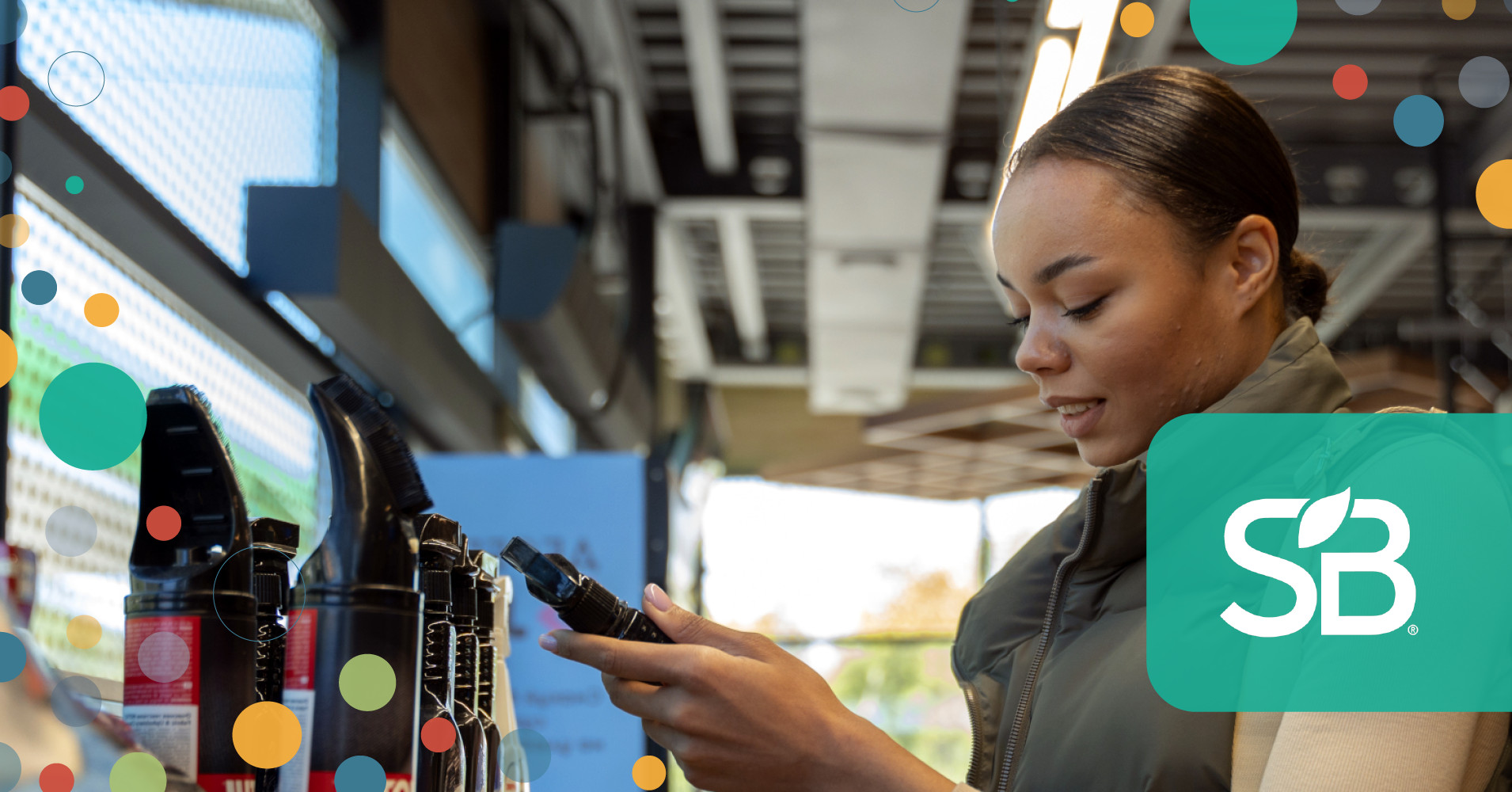Consumers want to understand what is in the products they are buying. The 400+
ecolabels currently on the market can help; but sometimes they leave the
consumer more confused about a product’s sustainability claims, as there is no
common standard.
Global nonprofit Green Seal aims to reduce
that confusion by offering a clear, trusted standard for sustainable products
across industries. Through extensive research, Green Seal found that while
consumers want products that are safe, non-toxic, cruelty-free, and evaluated
for health and environmental impacts, they struggle to understand the meaning
behind many certifications. To bridge that gap, Green Seal collaborated with
leading consumer-packaged goods brands, retailers and consumers to design a
refreshed certification mark that is both recognizable and trusted.
With a plan to unveil the new certification mark at SB’24 San
Diego later this month, Green Seal aims to build trust, simplify purchasing decisions, and
ultimately guide the industry toward more meaningful environmental and social
impacts by focusing on clear communication and industry-wide standards.
We spoke with CEO Doug Gatlin to
understand how Green Seal developed a certification mark that simplifies
decision-making for consumers and sets a foundation for the industry to advance
toward a healthier product future.
How do you envision this new certification mark reshaping the market for sustainable products and helping brands build trust with increasingly skeptical consumers?
Doug Gatlin: We spent the past two years talking with consumer-packaged
goods brands, retailers and consumers; and one thing that became apparent was
that everyone is looking for a way to cut through the chaos in the marketplace.
Through national surveys, consumers told us they most want their products to be
non-toxic, safe for daily use, comprehensively screened for health and
environmental effects, and cruelty-free. They said they look to the product
label to figure out if a product matches their values, and that certifications
can help — but only if they understand what the certification means, which they
often don’t.
We worked with the top brand consultancy in the business to develop a brand
identity and certification mark that will move the needle with consumers. We
explored a few different concepts and arrived at the one that tested far and
away the best: Our bold G checkmark logo with the descriptor, “Meets a high
standard for protecting people and planet.” The results showed 78 percent of
consumers are more likely or much more likely to buy a product if they see that
logo and descriptor combination on it.
That said, we know a certification mark alone won’t solve the challenges in the
marketplace. Our new brand identity is just the first step in our commitment to
take bold action to align the consumer-packaged goods and retail communities on
the core elements of safer and more sustainable products.
What inspired Green Seal to take on the challenge of creating a standardized definition for safer products, and what gaps did you identify in the current market?
DG: We took a hard look at how to accomplish our mission to accelerate the
adoption of safer and more sustainable products, and realized nobody agrees what
those products are. From retailers to regulators to ecolabels, we all have a
different standard. This is an unpopular position for the CEO of an ecolabeling
organization, but — at this point, ecolabels are just adding to the confusion.
There are so many labels that define sustainability differently that it’s hard
for consumers to know who to trust.
This is one reason why there is such a big gap between the number of US
shoppers who say they want to be seen as buying and using eco-friendly products
(43 percent) and the number who actually
do.
The other reason is that consumers are overwhelmed by all the issues they know
they should care about — whether it’s chemical
safety
or packaging
waste
or carbon
emissions
— and they have no consistent source of information for evaluating any of this.
I know from 12 years of experience working on the very successful LEED green
building program that until we develop a common definition of sustainability
that everyone — including industry practitioners and consumers — can get behind,
we’re not going to move forward in a meaningful way.
Can you walk us through the five core elements of a green product — Safer Chemicals, Responsible Sourcing, Low-Impact Manufacturing, Sustainable Packaging, and Verified Performance and Claims — and explain how Green Seal evaluates each element?
DG: If we’re going to bring the industry together around a definition of a
safer and more sustainable product, it has to be a collaborative project — it
can’t be an edict from up high. We developed the Core Elements framework with
the help of a community of more than 100 industry practitioners from more than
75 companies. This is very much the beginning of the journey — we are just now
opening a call for volunteer experts to join our committees to help us define
the next generation of leadership for cleaning products, personal-care products
and building-restoration products using this framework.
-
We expect to define Safer Chemicals as those that have undergone a
hazard assessment. This means that chemicals can’t slip in simply because
they do not appear on a known hazard list; they must proactively undergo an
assessment to prove they will not do harm to people or the planet if they
are used in the product. -
For Responsible Sourcing, we think the manufacturer should adhere to
established third-party frameworks for resource sustainability, comply with
widely accepted fair-labor practices, and meet cruelty-free standards. Many
brands already comply with certifications in these areas. The last thing the
industry needs is for us to create new criteria in areas where other
organizations already are doing great work. We expect to reference existing
programs wherever possible, for the sake of harmonization and ease of
compliance for manufacturers. -
For Low-Impact Manufacturing, we think producers should use strong
quality- and environmental-management systems by meeting the intent of the
ISO 9001 and ISO
14001 standards set by the
International Organization for Standardization. -
As for Sustainable Packaging, we think a product’s primary packaging
should contain recycled or biobased
content
and meet or exceed industry guidelines for recyclability and reuse. -
For Verified Performance and Claims, products should be able to prove
they work for their intended function compared to nationally recognized
products, using commonly accepted test methods. And their marketing claims
should be qualified and substantiated.
This is our starting point for the core elements, and we are looking forward to
a healthy conversation with industry practitioners about
product-category-specific criteria that is ambitious but attainable.
How has the refreshed framework evolved from the original?
DG: Our certification standard has always covered the entire lifecycle of a
product — from raw materials selection through manufacturing, packaging, use and
disposal. Two things are different about this new framework: It is crystal clear
and it is designed for industry-wide adoption.
The Core Elements framework lays out the five non-negotiables a product must
meet to claim a safer designation. This transforms complex technical criteria
into a language that is easy for brands to communicate and consumers to
comprehend. Until we speak a common language, we will not progress any further
on product sustainability.
This framework also is meant to be a public resource. We recognize that
certification is only one tool to accomplish our mission. We want brands and
retailers to use this framework even outside of their work with us.
What other benefits will the Green Seal standard offer brands? Will it help with compliance with new legislation, such as the EU’s Ecodesign Regulation?
DG: Brands tell us one of the most valuable benefits they get from our
certification is confidence. Both the science and regulation of ingredient
safety and product sustainability are evolving quickly. Our standard ensures
leadership in both these areas, and it is agile enough to quickly accommodate
emerging issues. This means that when a new concern comes to the forefront for
consumers and regulators — like it has recently with
PFAS
— Green Seal-certified products already are ahead of the curve.
Another major benefit is that brands can point to our publicly available
criteria as substantiation for their leadership claims. What we’re hearing from
our peer organizations in the EU is that their assurance process is no longer
going to be seen as an aspirational voluntary target in the EU but will be
reframed as a platform to support mandatory legal compliance with the new EU
Green Claims
Directive.
Our laws in the US are not nearly so rigorous at this point; but with state
regulations getting stricter, brands find that using a third-party certification
to future-proof their products against impending regulations is a smart business
move.



